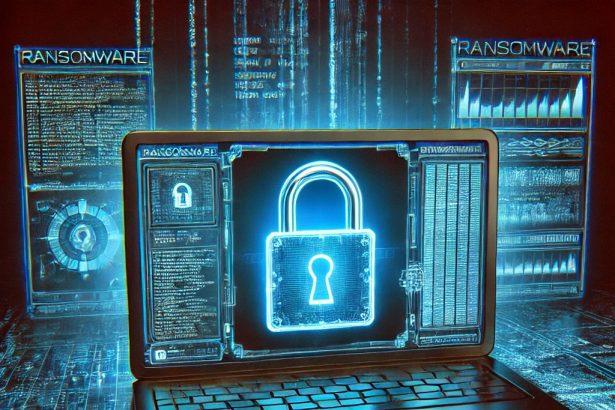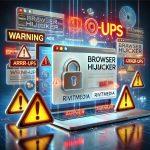9062 ransomware is a newly discovered file‑encrypting malware that locks victims’ files and demands ransom for decryption. Once it infiltrates a system—often alongside other malware—it encrypts personal and system data, rendering it inaccessible without paying the attackers. It may also install password‑stealing trojans and other malicious components.
Threat Overview
| Attribute | Details |
|---|---|
| Threat type | Ransomware (file‑encrypting malware) |
| Encrypted file extension | Varies—appended to original file names (no fixed extension) |
| Ransom note file name(s) | Likely uses generic names (e.g., README.txt, HELP_RESTORE.txt) |
| Associated email addresses | N/A (no publicly known) |
| Detection names | Detected as ransomware; triggers alerts based on behavior and file locking |
| Symptoms of infection | Files inaccessible; new extensions; ransom note appears; possible intrusion of trojans |
| Damage & distribution | Files encrypted beyond access; may steal passwords; typically distributed via email attachments or malicious payloads |
| Danger level | High – all files at risk; potential data theft and operational disruption |
| Removal tool | SpyHunter (download here) |
How to Analyze the Threat
How I Got Infected
9062 ransomware often arrives through socially engineered tactics—such as opening infected email attachments, clicking malicious links, or downloading compromised files. Once executed, it may quietly download additional trojans or password stealers.
What It Does
- Encrypts Files: Scans and encrypts documents, images, archives, etc., often appending a custom extension.
- Drops Ransom Note: Leaves instructions for payment and contact details in text files.
- Installs Other Malware: May add trojans to exfiltrate credentials and deepen system compromise.
Should You Be Worried?
Yes—9062 is dangerous. It locks all files and can lead to permanent data loss or theft. Even paying the ransom doesn’t guarantee decryption and encourages further attacks.
Ransom Note Text (Hypothetical Example)
(Note: This is a typical example; the actual note for 9062 may vary.)
pgsqlCopyEditYOUR FILES HAVE BEEN ENCRYPTED!
To decrypt, email us at decrypt9062@protonmail.com with your unique ID.
Send 1 Bitcoin. Upon payment, we will send decryption software.
If payment isn't made in 72 hours, price doubles.
Detailed Threat Evaluation
- Co-infection risk: 9062 doesn’t act alone. Victims often end up with credential theft and multi-stage infections.
- Encryption strength: Uses strong AES/RSA encryption—manual recovery is nearly impossible.
- Ransom note tactics: May threaten escalation (e.g., doubling fees) or data exposure to pressure victims.
- Trust issues: No assurance of decryption post-payment; attackers may simply disappear.
Manual Ransomware Removal Process
Important: Manual removal is recommended only for experienced users, as incorrect actions can lead to data loss or incomplete removal of the ransomware. If unsure, consider the SpyHunter Removal Method for a guided, automated solution.
Step 1: Disconnect from the Internet
- Immediately disable Wi-Fi or unplug the Ethernet cable to prevent the ransomware from communicating with remote servers.
- This can prevent additional encryption or further infections.
Step 2: Boot into Safe Mode
For Windows Users
- Windows 10/11:
- Press Windows + R, type
msconfig, and press Enter. - Under the Boot tab, select Safe boot and check Network.
- Click Apply, then OK, and restart your PC.
- Press Windows + R, type
- Windows 7/8:
- Restart your PC and press F8 repeatedly before Windows starts.
- Select Safe Mode with Networking and press Enter.
For Mac Users
- Restart your Mac and hold the Shift key immediately after the startup chime.
- Release the key when the Apple logo appears.
- Your Mac will boot in Safe Mode.
Step 3: Identify and Terminate Malicious Processes
Windows
- Open Task Manager by pressing Ctrl + Shift + Esc.
- Look for unusual processes consuming high CPU or memory.
- Right-click on the suspicious process and select End Task.
Mac
- Open Activity Monitor (Finder > Applications > Utilities > Activity Monitor).
- Look for unknown or high-resource-consuming processes.
- Select the suspicious process and click Force Quit.
Step 4: Delete Ransomware Files
Windows
- Open File Explorer and navigate to:
C:\Users\[Your Username]\AppData\LocalC:\Users\[Your Username]\AppData\RoamingC:\Windows\System32
- Identify and delete suspicious files (randomly named or recently modified items).
- Clear temporary files:
- Press Windows + R, type
%temp%, and hit Enter. - Delete all files in the Temp folder.
- Press Windows + R, type
Mac
- Open Finder and select Go > Go to Folder.
- Type
~/Library/Application Supportand check for unfamiliar files or folders. - Remove unknown
.plistfiles from~/Library/LaunchAgents.
Step 5: Remove Ransomware Entries from Registry or System Settings
Windows
- Press Windows + R, type
regedit, and hit Enter. - Navigate to:
HKEY_CURRENT_USER\SoftwareHKEY_LOCAL_MACHINE\Software
- Identify and delete ransomware-related registry entries.
Mac
- Open System Preferences > Users & Groups.
- Select the Login Items tab and remove any unknown startup programs.
- Check
~/Library/Preferencesfor malicious settings.
Step 6: Restore System Using a Backup or Restore Point
Windows
- Press Windows + R, type
rstrui, and press Enter. - Choose a restore point from before the infection and proceed.
Mac
- Restart your Mac and enter macOS Utilities by holding Command + R.
- Select Restore from Time Machine Backup and restore a safe backup.
Step 7: Attempt to Decrypt Files
- Check No More Ransom (www.nomoreransom.org) for available decryption tools.
- If unavailable, restore files from backups.
Automated Ransomware Removal with SpyHunter
If manual removal is too complex or risky, SpyHunter offers a safer, automated method for detecting and removing ransomware.
Step 1: Download SpyHunter
- Get SpyHunter from the official Enigma Software website.
Step 2: Install SpyHunter
- Open the downloaded file (
SpyHunter-Installer.exeor.dmgfor Mac users). - Follow the installation prompts.
- Launch SpyHunter upon completion.
Step 3: Run a Full System Scan
- Click Start Scan Now to detect malware and ransomware.
- Wait for the scan to complete and review detected threats.
Step 4: Remove Detected Ransomware
- Click Fix Threats to remove identified ransomware components.
- SpyHunter will clean your system automatically.
Step 5: SpyHunter’s Custom Malware HelpDesk
- If ransomware persists, use SpyHunter’s Malware HelpDesk for custom malware fixes.
Step 6: Restore Files
- Use backups stored on external drives or cloud storage.
- If no backup is available, check No More Ransom for decryption tools.
Preventing Future Ransomware Attacks
- Keep backups: Use cloud storage or an external hard drive.
- Install a reliable security tool: SpyHunter offers real-time protection against malware.
- Enable Windows Defender or Mac security features for additional protection.
- Avoid phishing emails and unknown attachments.
- Regularly update Windows, macOS, and installed applications.
Conclusion
9062 ransomware is a sophisticated, high-risk threat that encrypts all files and may steal sensitive data. It's typically distributed via phishing or malicious downloads and may bring additional trojans. Paying ransom doesn’t ensure safe file recovery and puts you on the attacker’s radar for future targeting. Using SpyHunter is recommended to clean your system and attempt decryption. But prevention remains key: keep data backed up, use reliable antivirus, and avoid risky attachments.




